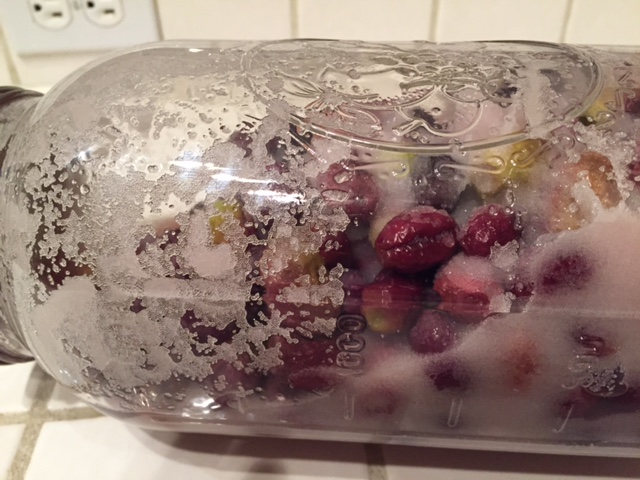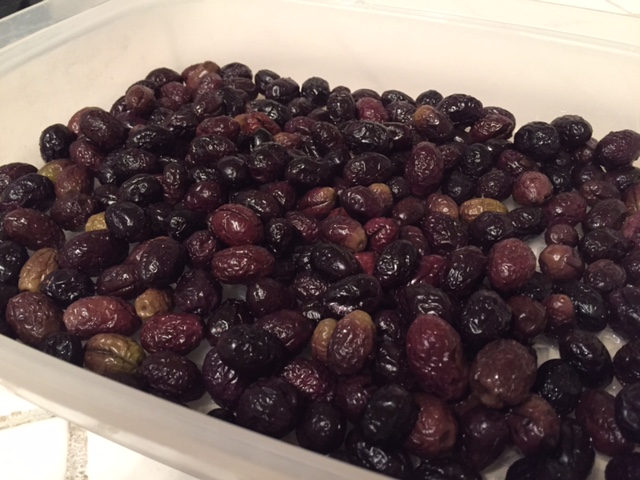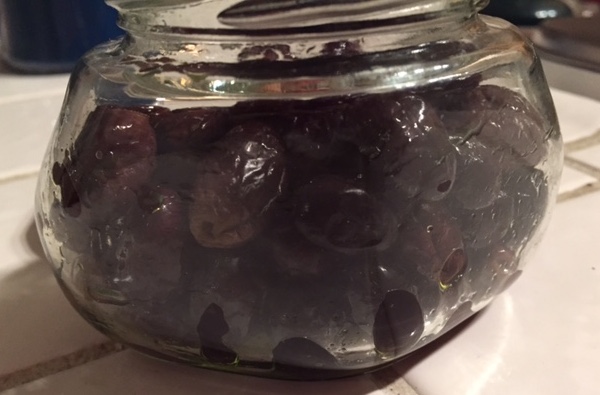Dry Curing Olives
Choose fully ripe, smallolives for dry salt-curing. Remove and discard any stems that are stillattached. Rinse the olives clean with water and drain them well in a colander. With the tip of a sharp paring knife make a slit in each olive.
Glass Jar or Crock Method
Spread a 1/4-inch thicklayer of canning/pickling salt over the bottom of a large half gallon glass jar or ceramic crock. Add alayer of olives on top of the salt.

It’s okay if the layer is2 olives deep, but it shouldn’t be more than that. Cover the layer of oliveswith more salt. Add another layer of olives. Repeat until all the olives arecompletely covered in salt.
Leave at room temperature,stirring the olives or shaking the jar once a day and adding more salt ifnecessary to keep the olives covered.
The olives will start toexude their bitter juices and the salt will turn into a moist paste. If itbecomes totally liquid, drain the olives and return them to the container withfresh layers of salt.

After 3 weeks , rinse the salt off of an olive and taste it. If it is stilltoo bitter, continue to cure the olives, adding salt to absorb the juices, andtesting the flavor about once a week.

When ready, olives curedby the dry salt method will have shriveled up and have a very mildly bitter butpleasant flavor. Once the olives have reached that stage, brush off or veryquickly rinse off the salt. If you rinse, spread the olives out in a singlelayer and let them dry off completely before proceeding. This can take severalhours (overnight is fine).
Toss the cured olives with1 tablespoon of extra-virgin olive oil. Store at room temperature for up to 1month, in the refrigerator for up to 6 months, or in the freezer for up to ayear.

These olives will have asalty flavor so if you are not used to this type of olive you might want to trya salt/water curing which I will complete next.
I am the most amazed athow tasty these olives are and will be so good in salad and with an appetizerplate over the holidays!








Leave a Reply